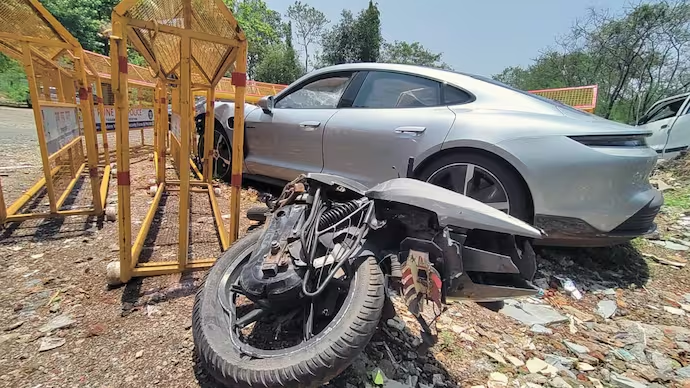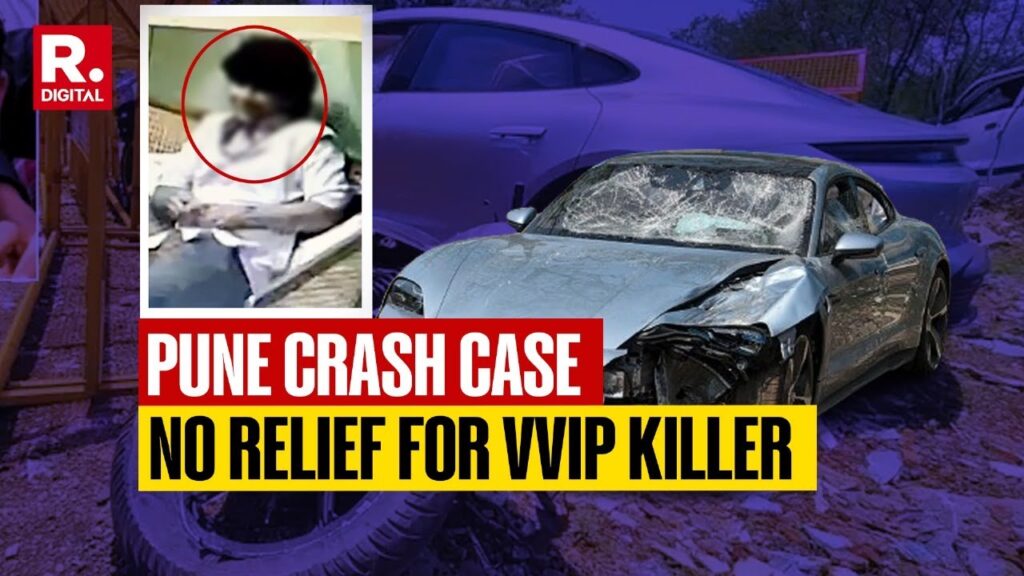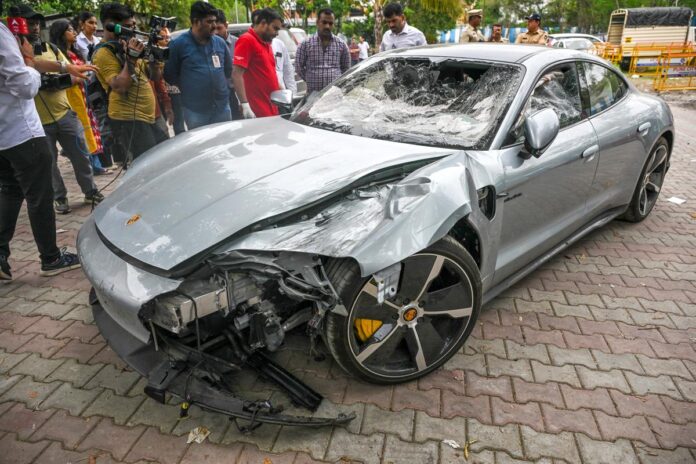In addition to resulting in the terrible deaths of two people, the recent Pune car crash accident involving a 17-year-old driver has also triggered a heated legal dispute. Significant concerns concerning India’s juvenile justice system are brought up by the Bombay High Court’s examination of the procedural justice in this case.

Pune Car Crash Incident: A Night of Tragedy
A fatal tragedy happened in Pune’s Kalyani Nagar early on May 19. A 17-year-old teenager is accused of smashing into a bike with a Porsche Taycan while inebriated and driving it at a high pace. Aneesh Awadhiya and Ashwini Koshta, two software engineers, died instantly as a consequence of the incident. Since then, this occurrence has drawn national attention because of the subsequent legal disputes in addition to the heartbreaking loss of young lives.
Debateable Leniency in the First Bail Decision?
The juvenile was given bail by the Juvenile Justice Board (JJB) on the same day as the Pune car crash accident. The boy was free to stay under the watchful eye of his grandparents and parents as long as he complied with the bail terms, which included writing a 300-word essay on road safety. The people was incensed over this judgment, which they felt was too mild considering how serious the situation was.
Also Read :- Pune Porsche Case: Juvenile’s Family Faces Legal Action
Public Uproar and Legal Proceedings
The original bail judgment was met with a fierce public outrage. Many believed that the seriousness of the issue had not been adequately addressed by the legal system. In response to the criticism, the police filed an appeal against the JJB’s ruling. On May 22, the board changed the bail arrangement so that the kid may live in an observation home rather than with his family. Significant legal issues were brought up by this modification, which the Bombay High Court is currently looking into.
Legal Matters and the Role of the High Court
The Bombay High Court has adopted a critical stance toward the procedural issues of this Pune car crash case, with Justices Bharti Dangre and Manjusha Deshpande making up its division bench. The primary question on the court’s mind is whether the minor’s incarceration was lawfully warranted as a result of the bail order alteration. The police’s ability to modify the bail order and the decision’s procedural soundness were questioned by the court.

Arguments Made in Court
Both the prosecution and the defense presented their positions on the matter during the arguments that were heard by the court.
Stand of the Prosecution
Hiten Venegavkar, the public prosecutor, maintained that the detention to the observation home was appropriate and required to make a powerful social statement. Whether “rightly or wrongly” granted, he made it clear that the original JJB bail decision was insufficient to fully represent the gravity of the crime. Venegavkar also emphasized the necessity for a stricter reaction and highlighted flaws in the inquiry, such as the suspected manipulation of the minor’s blood samples.
Stand of the Defence
Defense’s Position Senior attorney Aabad Ponda argued on behalf of the kid that his detention at the observation home following his release on bond was an infringement on his fundamental rights. Ponda argued that the Juvenile Justice Act does not provide this kind of post-grant review of a bail decision. He emphasized that Section 12 of the statute requires minors to be released on bond; only some modifications are allowed, such as switching the person responsible for the juvenile’s release.
Consequences for the Youth Court System
There are important ramifications for the Indian juvenile justice system from this case. The ruling of the High Court is expected to have an impact on how cases of a similar nature are handled in the future, particularly those involving grave violations and public controversy. On June 25, the High Court will make a decision about the habeas corpus case; it has postponed its order. This decision will be keenly monitored since it will deal with important issues pertaining to adolescents’ personal liberty and procedural justice in the judicial system.
Conclusion
A juvenile driver involved in an automobile accident in Pune has raised significant questions about the juvenile justice system. An method that strikes a balance between responsibility and rehabilitation is necessary, as demonstrated by the Bombay High Court’s examination of the procedural fairness in this case. The intricacies and difficulties involved in managing adolescent cases are brought to light by this case, particularly in light of the public and media attention that is awaited.
Disclaimer: The information provided in this article is based on publicly available sources and may not be 100% accurate.

